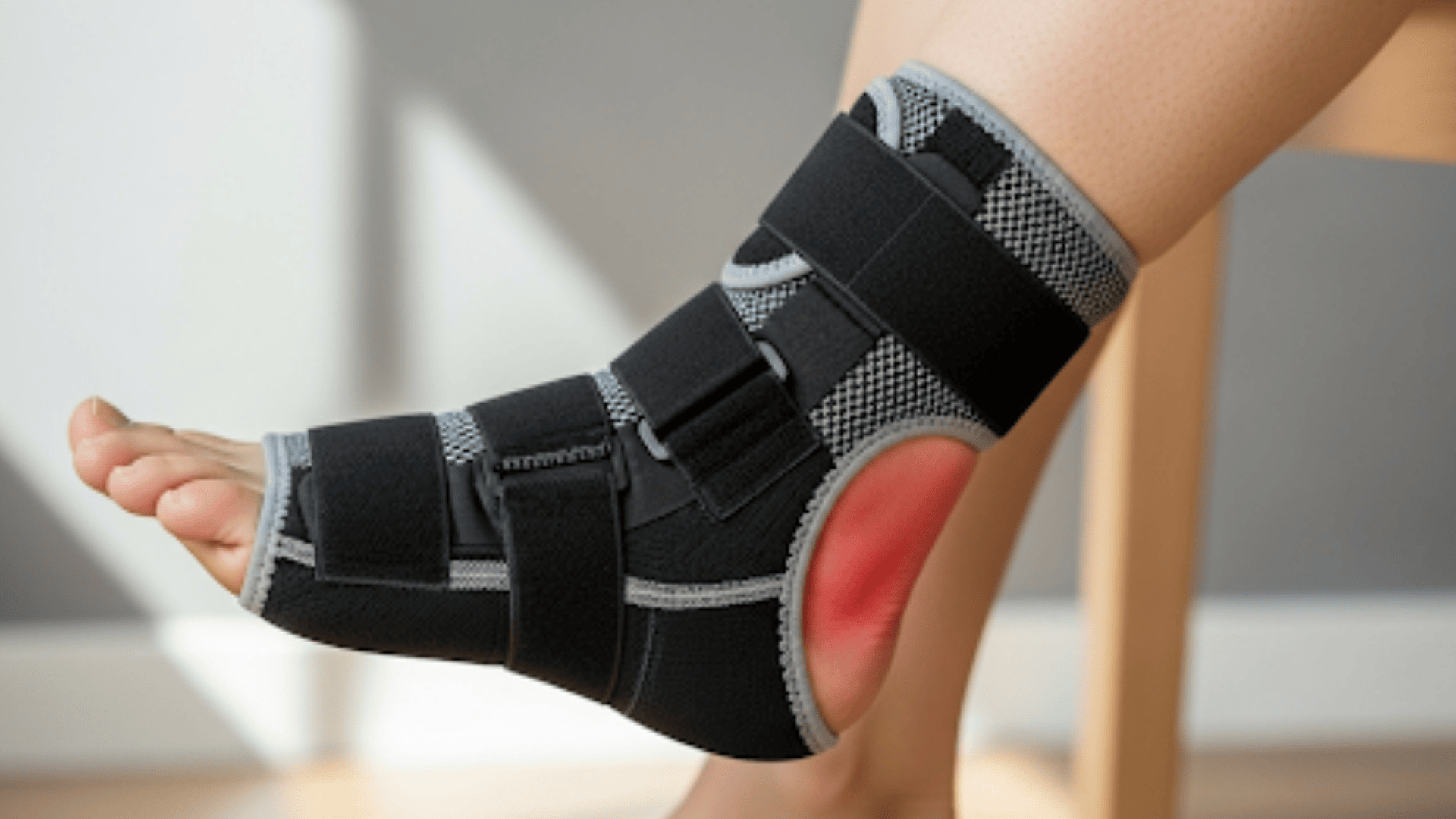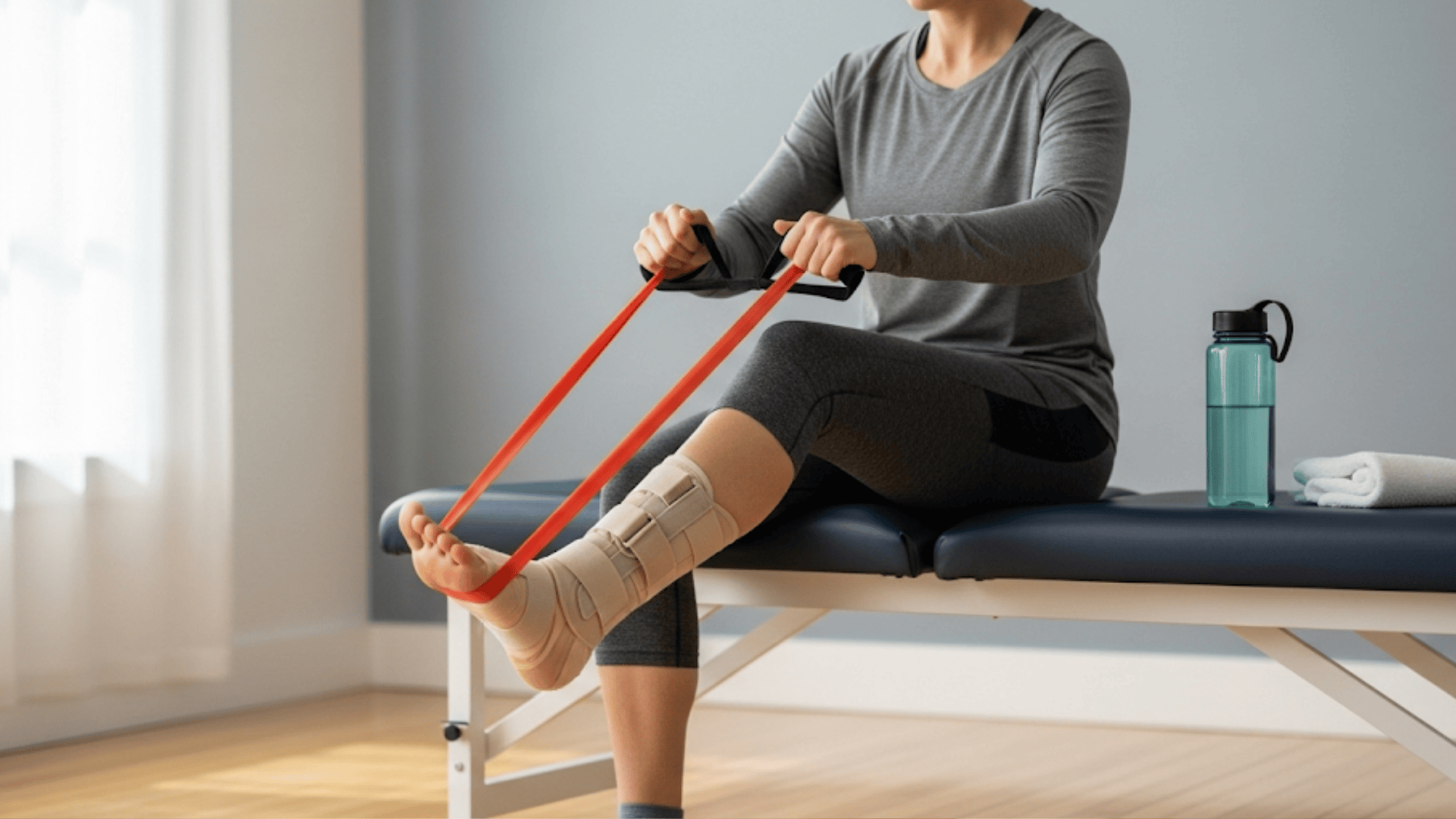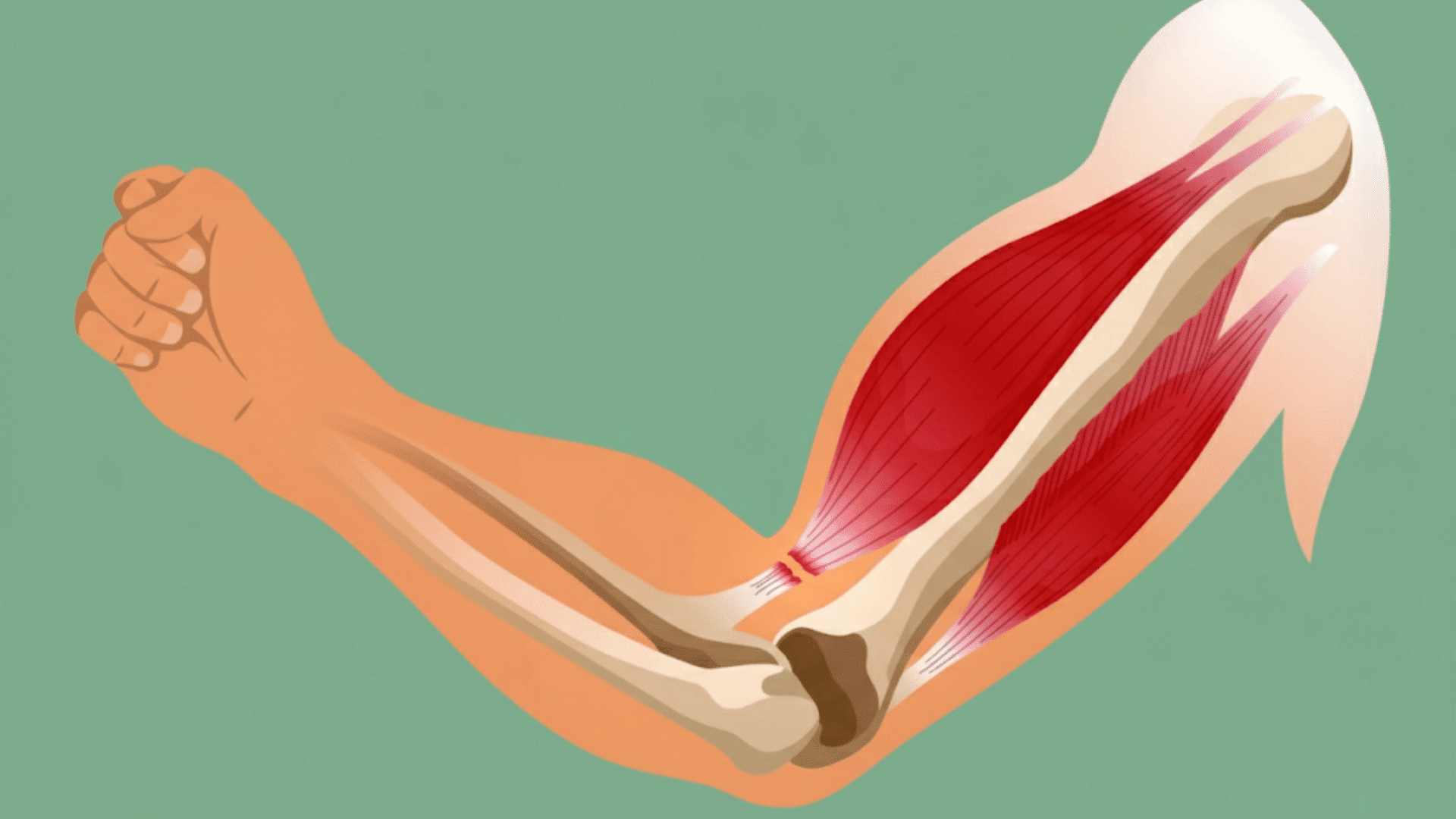Have you ever asked yourself why ankle injuries can linger far longer than expected?
When the problem is a high ankle sprain, the ligaments that connect the tibia and fibula are stretched or torn, creating instability and slowing down the healing process.
Unlike a typical sprain, this injury affects deeper tissues that are crucial for balance and movement, which is why high ankle sprain recovery time is often longer and more challenging.
The pain, swelling, and difficulty walking can feel overwhelming, especially for athletes or active individuals eager to return to normal routines.
The good news is that with early diagnosis, proper treatment, and a structured approach, recovery is achievable and stability can be restored.
What Is a High Ankle Sprain?
A high ankle sprain, also called a syndesmotic sprain, occurs when the strong ligaments above the ankle joint are stretched or torn.
These ligaments connect the two lower leg bones, the tibia and fibula, and play a crucial role in maintaining the leg’s stability when standing, walking, or bearing weight.
This kind of injury is less common than a standard ankle sprain but is often more serious.
High ankle sprains typically occur when the foot is twisted outward or bent upward with force, which is common during sports that involve sudden changes of direction, jumping, or collisions on the field or court.
Since these ligaments provide essential stability, any injury can affect movement and take longer to heal than a low ankle sprain.
Early diagnosis and prompt care help support a smoother recovery and reduce the risk of long-term issues.
Symptoms and Diagnosis of a High Ankle Sprain
A high ankle sprain exhibits distinct symptoms that distinguish it from common ankle injuries.
Pain typically starts just above the ankle and may extend up your lower leg. This discomfort intensifies when walking, climbing stairs, or standing on tiptoes.
Unlike regular sprains, swelling often spreads higher up the leg and appears quickly after injury. You may also notice bruising around the ankle or along the lower leg area.
The most telling sign is ankle instability. Your joint feels weak and wobbly, making it difficult to bear weight or walk normally.
Key warning signs include:
- Pain above the ankle that worsens when turning your foot outward
- Swelling that extends higher than typical ankle injuries
- Inability to put full weight on the affected foot
- A sense that your ankle cannot support you properly
Obtaining a proper diagnosis requires a physical examination, during which your healthcare provider will assess pain points and test ankle movement.
For suspected severe injuries, X-rays help rule out fractures while MRI scans reveal the extent of ligament damage.
These imaging tests guide treatment decisions and help predict recovery time.
High Ankle Sprain Treatment
Before exploring the details of High Ankle Sprain recovery, it is essential to understand the primary treatment approaches for high ankle sprains and how each method supports the healing process.
| Treatment Category | Purpose | When Used | Key Benefit |
|---|---|---|---|
| At-Home Care | Controls pain and swelling, supports joint | Early phase, mild to moderate injuries | Eases discomfort, reduces risk of further damage |
| Medications | Relief from pain and inflammation | For injury-related pain or swelling | Manages symptoms, helps comfort |
| Bracing/Protection | Stabilizes and protects the ankle | When additional support is needed | Limits movement, aids healing |
| Physical Therapy | Restores movement, strength, and balance | After the initial pain has improved | Speeds recovery, prevents reinjury |
| Surgical Treatment | Repairs ligament tears and restores stability | Rare, severe cases with persistent problems | Provides stability, used when other methods fail |
High Ankle Sprain Recovery Time
High ankle sprain recovery can take several weeks or months, depending on how severe the injury is and how closely the treatment plan is followed. Recovery usually happens in phases:
Early Phase (0 to 2 Weeks)
The initial phase of recovery focuses on limiting movement, controlling pain, and reducing swelling. Resting the ankle as much as possible and using crutches, a brace, or a walking boot helps protect the area from further injury.
Ice packs and elevation are common recommendations during this stage, which ease discomfort and keep swelling in check.
Healthcare professionals often advise against putting full weight on the injured foot until the pain has lessened and the swelling begins to resolve.
Middle Phase (2 to 6 Weeks)
As pain and swelling begin to improve, the body can handle gentle movement and structured exercise. Physical therapists typically recommend simple stretches and mobility exercises to support flexibility and prevent stiffness.
Strengthening routines gradually reintroduce muscle movement around the ankle, and patients slowly increase the weight placed on their foot as comfort grows.
Working with a therapist ensures that progress continues at a safe pace, while guided balance drills help to restore stability and coordination for everyday activities.
Late Phase (6 to 12+ Weeks)
In the final stage, rehabilitation focuses on building full strength and function. Activities may include light jogging, resistance band training, and drills that mimic sports or daily life movements.
As recovery continues, coordination and agility exercises become more advanced, preparing the body for a safe return to regular routines and sports.
The full recovery timeline varies depending on the severity of the injury; mild sprains may heal in a few weeks, while more severe or surgical cases can take several months.
Consistently following each phase, under professional guidance, improves ankle health and supports an active lifestyle after injury.
Preventing High Ankle Sprains
There are several practical steps individuals can take to reduce the risk of future high ankle sprain injuries and maintain strong and stable ankles.
Some of the most effective prevention strategies include:
- Building ankle and leg strength. Regular exercises, such as calf raises, resistance band exercises, and gentle squats, help strengthen the muscles that support the joint.
- Practicing balance and stability drills. Activities such as standing on one foot, using a balance board, or doing slow, controlled movements help train the body and improve the sense of where the foot and ankle are positioned.
- Stretching before activity. Keeping the calf muscles, Achilles tendon, and ankle flexible makes it easier to move safely and lowers the risk of overstretching a ligament.
- Wearing proper footwear. Supportive and well-fitting shoes are important, especially for sports or outdoor activities.
- Protecting the joint when needed. For athletes or individuals with a history of ankle injuries, taping or using an ankle brace during sports can provide extra support and may help prevent reinjury.
- Focusing on good exercise technique. Practicing proper running, landing, and cutting movements with guidance from a coach or physical therapist helps reduce the risk of accidents.
The Bottom Line
High ankle sprain recovery time can feel discouraging, but it is not a permanent setback.
With consistent care, proper treatment, and patience, stability and confidence return.
The important thing to remember is that recovery is not just about waiting for pain to fade but about following each step that strengthens the ankle and reduces the chance of another injury.
By focusing on strength, balance, and gradual return to activity, you give yourself the best opportunity for lasting results.
Take an active role in protecting your ankle health so you can move forward with strength and stability.
Looking for more wellness tips and strategies? Browse Recovery and Wellness for evidence-based relief tips.
Frequently Asked Questions
How Long Should You Stay Off a High Ankle Sprain?
Rest for 2-6 weeks, depending on the severity of the high ankle sprain. Use crutches or boots until pain and swelling reduce significantly.
How to Tell if it’s a High Ankle Sprain?
Pain above the ankle, swelling up the leg, trouble walking, and the ankle feels unstable. Pain worsens when turning the foot outward or standing on tiptoes.
How to Rehab a High Ankle Sprain?
Start with rest and ice. Add gentle stretches after 2 weeks. Progress to strengthening exercises, then balance training, and sport-specific movements gradually.









